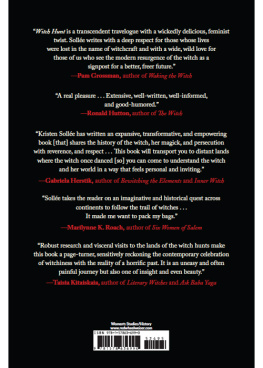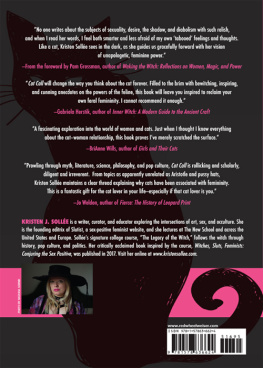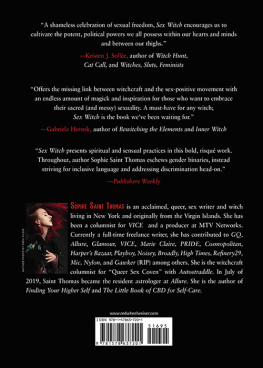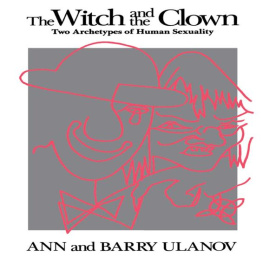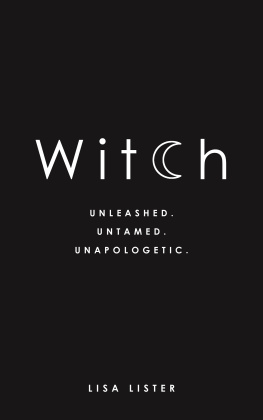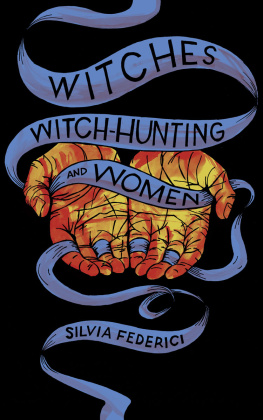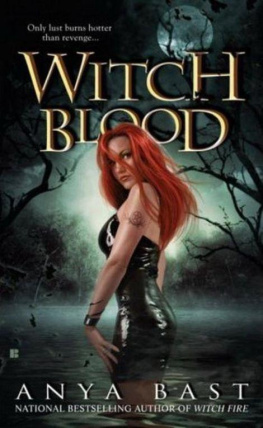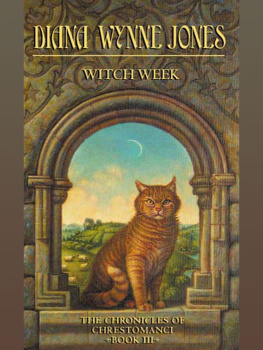
Published by
ThreeL Media | Stone Bridge Press
P. O. Box 8208, Berkeley, CA 94707
www.threelmedia.com
2017 Kristen J. Solle
All rights reserved.
No part of this book may be reproduced in any form without permission from the publisher.
Printed in the United States of America.
p-ISBN: 978-0-9964852-7-2
e-ISBN: 978-0-9964852-8-9
CONTENTS
INTRODUCTION
Maleficent was my first childhood crush. I was hypnotized by her stately horns, her pale green skin, and her extravagant eyes. I had no love for Sleeping Beautys heroine, Princess Aurora. She was too perfect, too un-relatable. But Maleficent? I could appreciate anger, frustration, rejection, and the raw expression of emotion all rolled into a roiling grand dame.
Back then I didnt realize just how much Maleficents character reified harmful stereotypes about witches and womenI was too busy crafting my black cape out of bedsheets. This was long before Disney humanized her in the 2014 film Maleficent. This was when Maleficent lived up to her name, epitomizing chthonic forces and forbidden female power. She was the witch I wanted to be: a woman in control. A surviving video from my early years shows me with hands out, claw-like, brow furrowed, doing my best Maleficent impression. On her sixteenth birthday, she shall prick her finger on the spindle of a spinning wheeland die! Somehow, I made it into adulthood without becoming a vengeful, horned villain.
Instead, I became a feminist.
Like many millennial women, I see a reclamation of female power in the witch, slut, and feminist identities. Each of these contested words conjure and counter a tortuous history of misogyny, and each in its own way can be emblematic of women overcoming oppression.
After a decade of exploring gender in contemporary music, art, and culture as a journalist, I started a sex-positive feminist website called Slutist. At the time, slut had recently been listed in The Atlantics Worst Words of 2012. The anti-victim-blaming SlutWalk movement was also gaining traction, and slut-shaming was becoming a frequently covered topic in the media. Playing upon the power of the word slut with both tongue-in-cheek revelry and dead seriousness, the site began as an outlet to address gender politics and female sexuality through op-eds, interviews, personal essays, and original artwork.
Before long, my lifelong fascination with the occult, alternative spiritual practices, and macabre aesthetics began to creep in. I found that dozens of the feminist writers, artists, and activists who contributed to the site felt as comfortable reclaiming or allying with the word slut as they did with the word witch. Building community with those similarly entranced by transgressive sexuality and dark, dynamic, and misunderstood women, Slutist quickly spun into a leather- and lace-clad celebration of the witch-slut-feminist trifecta like Stevie Nicks sweeping the stage in 1976.
After producing two critically acclaimed music, art, and burlesque festivals called Legacy of the Witch honoring the witch as a feminist icon, curating an interdisciplinary gallery show called Witch Slut Are You?, and teaching multiple college courses on fourth-wave feminism and the feminist legacy of the witch at The New School, I knew it was time to examine the connections between witches, sluts, and feminists in a more codified form.
Witches, Sluts, Feminists: Conjuring the Sex Positive is an introduction to the sex-positive history of the witch. With a focus on sexual liberation, this book traces the lineage of witch feminism through art, film, music, fashion, literature, technology, religion, pop culture, and politics. It delves into reproductive rights, sexual pleasure, pornography, queer identity, body positivity, and sex work, and demonstrates why the slut is in many ways the witch of the twenty-first century.
Although many men and those on the masculine spectrum identify as witches and have historically been accused of witchcraft, this book specifically looks at the indivisible links between the witch, femininity, and womanhoodwhich includes trans women and anyone on the feminine spectrumand the persecution women have faced as a result of their perceived connection with witchcraft. Witches, Sluts, Feminists thus explores the witch as an identity forced upon women, as an identity taken up freely by feminine individuals, and as an embodiment of those who practice witchcraftan umbrella term for a variety of occult practices.
A commitment to intersectionality is non-negotiable when approaching any feminist herstory. I have endeavored to include the perspectives of a broad cross-section of feminists within these pages. I also recognize that many beloved feminist figures were/are flawed individuals. My inclusion of a particular activist, scholar, or artist does not reflect a rubber stamp of approval for their entire oeuvre, but merely affirms their role in the story of witches, sluts, and feminists.
The witch is not a Western, Christian invention by any stretch of the imagination. However, dominant narratives about witches and witchcraft in American history and popular culture are most informed by the Anglo-European, Christian lineage of the witch, which is why I chose it as the focus of this exploration. By juxtaposing leading scholarly research on witch persecutions in the US and Europe with pop occulture analyses and interviews with feminists, activists, artists, academics, and practitioners of witchcraft, Witches, Sluts, Feminists connects the legendary character so many love to emulate or fear with revolutionary women of the past and present.
The structure of the book is cumulative. Initial chapters offer a condensed background on the witch from early civilization into medieval Europe and colonial America. Successive chapters build upon this foundation to show how gendered narratives about witches continue to impact and inform women in contemporary America. Each section undresses the witch in different ways through different methods, peeling back layers of misinformation and misogyny to chart her development from diabolical sorceress to symbol of feminist empowermentand back.
At the end of the book, Ive included interviews with self-identified witches to flesh out and humanize the modern-day witch. Following those interviews are my references. In addition, the official website www.witchesslutsfeminists.com offers multi-media content that expands upon the text.
I should now take a moment to discuss what this book isnt.
Witches, Sluts, Feminists is not a formal work of academic scholarship, although there are multiple academic sources central to my arguments.
Witches, Sluts, Feminists does not intend to promote one particular school of witchcraftalthough there are a variety of practitioners interviewed within the book, and you may find a spell or two within these pages.
Witches, Sluts, Feminists is not an exhaustive catalogue of every notable witch from the beginning of time up to the present, nor does it address every important feminist issue under the sun. A few of my favorite sirens and subjects were left to melt on the cutting room floor. Brevity is the soul of witch, after all.
So what fresh spell is this little text?
I designed Witches, Sluts, Feminists to appeal to feminist scholars, historians, lawyers, artists, activists, occultists, and witchcraft practitioners as well as those unfamiliar with the cultural and political history of the witchapart from what theyve seen in mainstream media. This concise primer is an interdisciplinary take on a vast subject, spinning elements of a multi-faceted world in kaleidoscopic, new ways. Ideally,
Next page

